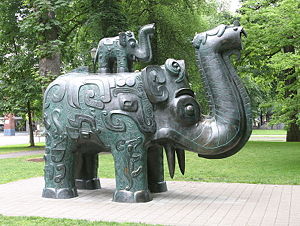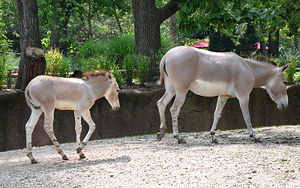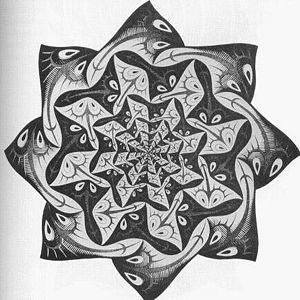Similarity
K-12: Materials at high school level.
Introduction
We just looked at congruence. Shapes are said to be congruent if they have the exact same shape and size.
What if we wanted to look at things that had the same shape, but come in different sizes? It turns out that we can and will look at such shapes. If two objects have the same shape, but have a different size, the we say they are similar.
We have some examples here of similar shapes. On the left you see Russian Dolls. If we ignore the paintings on the bottom, then they are all pretty much the same doll, but just different shapes.
The other two images are the ones we mentioned in the section on Congruence. The elephants are similar to each other. If we ignore the decoration on the larger elephant's trunk, the top elephant is just a scaled down (smaller) version of the larger one. The last picture shows a pair of Somali Wild Asses. The young animal is just a smaller version of the larger one.
We say that the Russion dolls are all similar to each other, the elephants are similar to each other and the Wild Asses are similar to each other.
 |
 |

|
| Russian Dolls | Statue of two elephants in a park in Portland, OR | A Somali Wild Ass and it's foal |
Moving our shapes is allowed
Note that we are allowed to rotate and move the shapes if we want to. The three triangles below are all similar to each other. The big triangle in the middle is similar to the medium triangle on the left and the small one on the right.
The small triangle on the right is just the bigger triangle, sized down to a smller scale and then slid over to the side.
The medium triangle can be thought of as the large triangle which would have been shrunk a little bit then moved to the left and finally rotated around just a bit.
| Similar Triangles |
|---|

|
Some interesting examples from Escher
| Path of Life I by Escher | ||
|---|---|---|
 |
 |

|
Path of Life I was made for a funeral building at a public cemetary in Utrecht (in the Netherlands). The design suggests the process of birth, growth, and death with a strong feeling of movement. White figures appear to appear from the central point, reach the edge to turn black and then flow back into the point at the center.
Note that all of the black fish are similar, and all of the white fish are similar. On the right is a diagram that shows how they are similar but differ in size.
In this case, the large fish is approximately 10 units long, and the smaller fish is approximately 6 units long. This means we scaled it using only 6 out of 10 units. We say we have scaled it by a factor of 6/10.